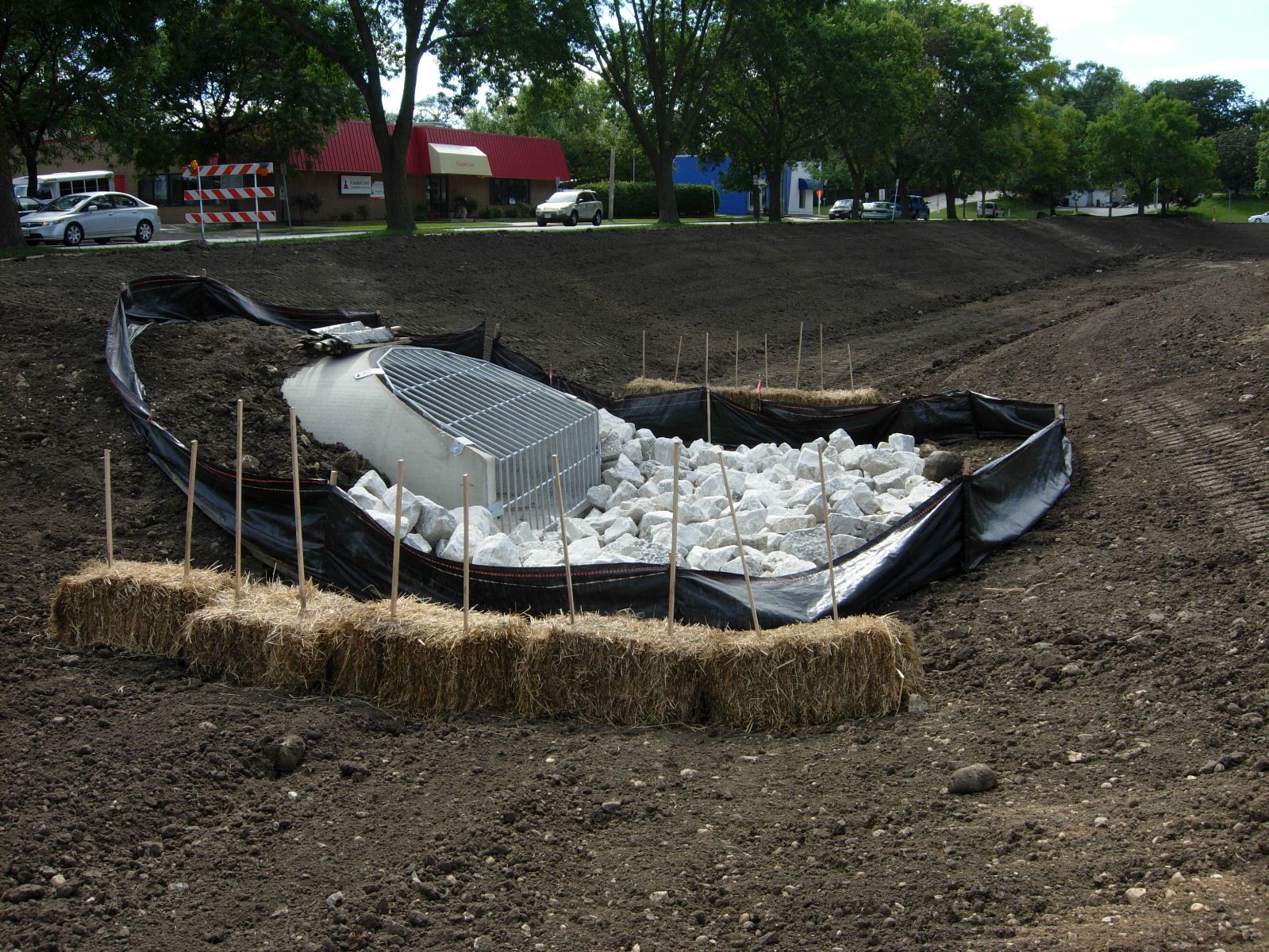Outlet Structures

Description
Outlets of BMPs are devices that control the flow of stormwater out of the BMP to the conveyance system.
Outlet Protection Design in Relation to Receiving Wetlands
This section describes the various types of common outlets such as flared end structures, risers, single- stage outlets, and multi-stage outlets. Considerations include setting back the outlet from a brook, providing appropriate energy dissipation, and orientating the outlet to reduce scour effects on the opposite bank.
Alignment of Outlets into Streams
The Wetlands and 401 regulations require that stormwater treatment be provided prior to discharge into wetland resource areas such as vegetated wetlands (BVW, IVW, salt marshes), land under water (streams, lakes, rivers, ponds, ocean), and other resource areas, except for Riverfront Areas ILSF, BLSF, and land subject to coastal zone flowage, where such practices may be sited, provided the structures meet the performance standards specified in the Wetland regulations applicable to all projects.
The impact of new pipe outfalls on wetlands can be significantly reduced by locating the outfall point back from the receiving stream, using a flared-end structure, installing riprap or bio-engineered splash pad, and either digging a channel from the outfall to the stream or designing the splash pad to act as a level spreader to sheet the discharged stormwater to the stream.
In addition to not placing the outfall and energy dissipation in a wetland resource area such as a BVW or LUW, care must be exercised in the outlet design to ensure its orientation is such to reduce scour at the entry point and opposite bank. The preferred approach is to end the outlet pipe at a headwall or flared-end structure with a riprap or bio-engineered splash pad, discharging to a manmade drainage swale that is aligned at no more than a 45 degree angle to a stream channel. Design the outlet point and riprap or bio-engineered splash pad to reduce the energy sufficiently to eliminate a need to install riprap on the bank opposite the outfall point to protect it from scour.
References
Caltrans, Storm Water Quality Handbooks. 2003. (
http://www.dot.ca.gov/hq/construc/stormwater/manuals.htm)
Connecticut Department of Environmental Protection. Connecticut Stormwater Quality Manual. 2004. (
http://dep.state.ct.us/wtr/stormwater/strmwtrman.htm)
Idaho Department of Environmental Quality. Catalog of Stormwater BMPs for Cities and Counties. March 2003. (
http://www.google.com/u/ DEQ?q=stormwater&domains=www.deq.idaho.gov&sitesearch=www.deq.idaho.gov)
Maine Department of Environmental Protection. Maine Stormwater Best Management Practices Manual. January 2006. (
http://www.maine.gov/dep/blwq/docstand/stormwater/stormwaterbmps/index.htm)
Maryland Department of the Environment. Maryland Stormwater Design Manual, Volumes I and II, October 2000. (
http://www.mde.state.md.us/Programs/WaterPrograms/SedimentandStormwater/stormwater_design/index.asp)
New Jersey Department of Environmental Protection. New Jersey Stormwater Best Management Practices Manual. April 2004.
http://www.state.nj.us/dep/stormwater/bmp_manual2.htm
U.S. Department of Transportation. Federal Highway Administration. Stormwater Best Management Practices in an Ultra-Urban Setting: Selection and Monitoring. (Undated). (
http://www.fhwa.dot.gov/environment/ultraurb/index.htm)
U.S.Environmental Protection Agency. Office of Research and Development. The Use of Best Management Practices (BMPs) in Urban Watersheds. PA/600/R-04/184. September 2004.
Vermont Agency of Natural Resources. The Vermont tormwater Management Manual. April 2002. (
http://www.vtwaterquality.org/stormwater.htm)